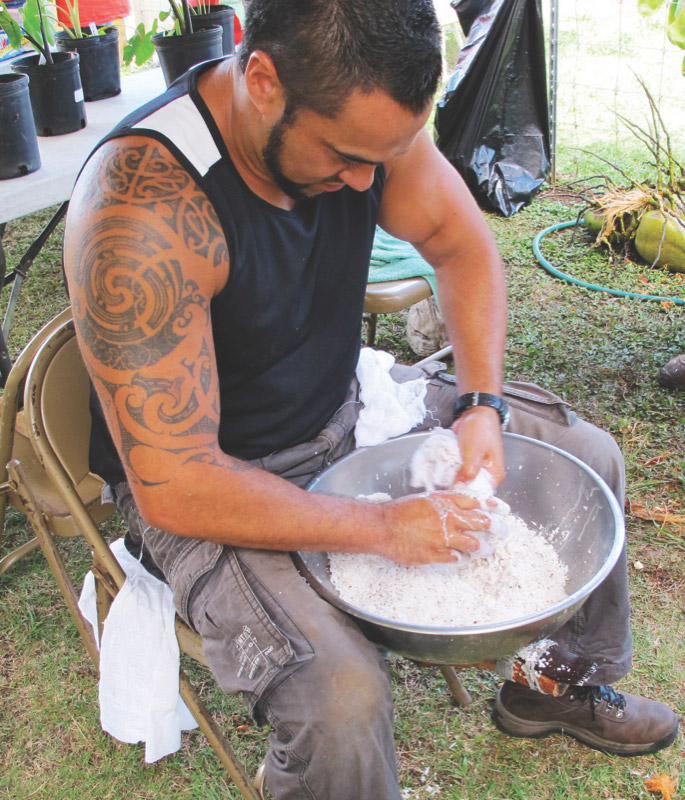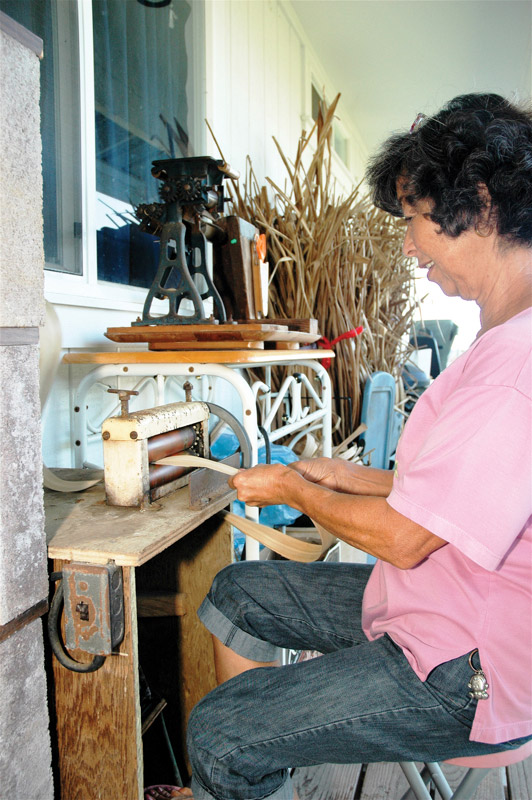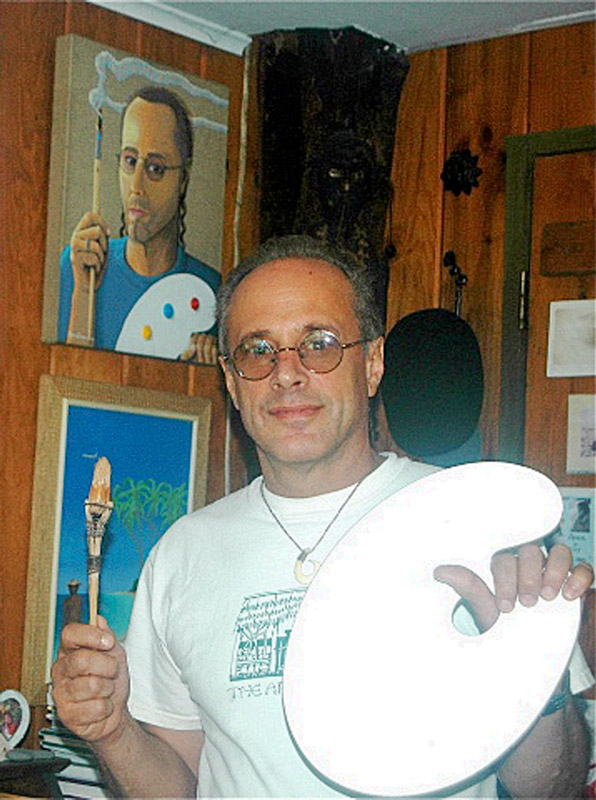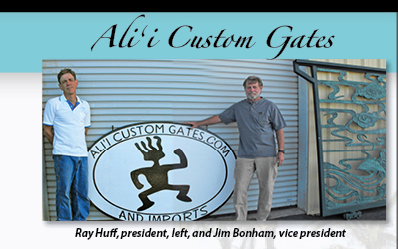
Community Sharing, Local Style at a Hands-On Lu‘au

By Andrea Dean
Ever been to a lu‘au and got to make your own lau lau? (Say that 10 times fast!) Ka Hana No‘eau and the Hawai‘i FFA (Future Farmers of America) Foundation have created the Kohala Style Lu‘au, where visitors and residents are mentored by Kohala locals in how to prepare all of the traditional lu‘au foods. And then, of course, you can enjoy sitting down to eat ono Hawaiian foods with your new mentors and friends.
Funded by the Hawai‘i Tourism Authority, the Kohala Style Lu‘au brings visitors and new residents together to connect in an authentic way with the people and culture of the local community.
“Many visitors to our island, as well as newcomer residents, enjoy only the reception or the actual party,” says Ka Hana No‘eau Program Director David Fuertes.
The Kohala Style Lu‘au brings together visitors from the resorts and new and old residents for fun and learning in a cooperative environment. There are three Kohala Style Lu‘au scheduled, and I attended the first one on October 30th at the Kohala Intergenerational Center in Kapa‘au. The lu‘au was a heartwarming experience and left me feeling connected to my community and Hawaiian culture in a deeper way.
“Kohala-style preparation is an important part of the festivity, with the true dynamics of people connecting,” says Fuertes. “Once we connect, we naturally want to help each other with our opportunities or issues. This community is about positively helping each other, like a family.”
Ka Hana No‘eau is a major driver in North Kohala for community food self-sufficiency and agricultural economic development. The organization brings together mentors with youth to learn and perpetuate traditional and contemporary skills such as growing taro, animal husbandry, saddle making, sustainable farming and journalism. Entrepreneurship is also a major component of Ka Hana No‘eau’s programs, mentoring youth and families to foster economic sustainability from agricultural activities.
The Kohala Style Lu‘au is a fundraiser for Ka Hana No‘eau’s “10 x 10 x 10,000 Project,” a venture that addresses both food self-sufficiency and economic development. Before you sit down for this Hawaiian feast, grab a cup of Kona coffee and get out your calculator. We are going to do the math of community food self-sufficiency.
The 10 x 10 x 10,000 project has 10 families planting taro, one foot apart in rows 100 feet long. In 10 months, each of these taro plants will produce eight taro offspring (known as huli). In the second round of planting, each family will have 800 huli to plant. In the third round of planting, the families will have 6,400 huli to plant (800 x 8). Still with me? By the time we get to the fourth planting, each family will be harvesting 10,000 pounds of taro— a month! This is exceptional planning for food self-sufficiency.
“This will help our Kohala community to sustain itself with one of our local starches. We also are moving in the direction of raising enough sweet potato and breadfruit so we can eat healthier and, hopefully, reduce health disparities,” says Fuertes.
The Kohala Style Lu‘au I attended began with a blessing, two blessings actually, a light rain and Kahu Kealoha Sugiyama invoking a blessing to give the 10 families involved in the 10 x 10 x 10,000 project strength, stamina, understanding, patience, safety and unity.
I began my hands-on lu‘au experience by making a plumeria lei. I just got settled down and got a few flowers on the lei needle when a call to come outside was issued—the pig was coming out of the imu and this was not to be missed. I watched the guys pull off the layers—the canvas, the ti leaves—and then pull out the pig. The pig was wrapped in chicken wire (which I learned has to be burned first to burn off the coating on the wire). The whole pig was placed on a large, stainless steel table with sides. Unlike at the resort lu‘au where you get to “oooo” and “ahhh” at the pig and then sit down to the buffet, I was handed a set of tongs. Wide-eyed, I stared blankly between the pig and my tongs. “Pick out the bones,” someone said. And there I was—vegetarian girl—picking out bones with the boys. Someone handed me a piece of pork and I ate it. I was internally disturbed for a moment, but quickly got over it. My bone-picking friend was the one staring with wide eyes later, when I was spotted gobbling down large quantities of pork lau lau and local beef, without any visible guilt.
Next I watched Dennis and Lehua Matsuda fillet an ahi and prepare poke. Whenever he is not busy with his duties as the associate director for Ka Hana No‘eau, Dennis is out catching fish. He showed us how to make use of the entire fish. He artfully carved it up and separated the different parts for poke, for frying and for fertilizer. Natural farming methods make use of the fish head for fertilizer. Aunty Lehua runs the sustainable gardening program at Ka Hana No‘eau and many of the veggies for the lu‘au came from their abundant garden at the Kohala Intergenerational Center.
Other lu‘au participants were making lau lau and lomi salmon. I was interested in learning to scrape the meat from coconuts for fresh coconut milk from two well-muscled Maori men (maybe I spent too long at that station?) and talking to a woman from Yap who was teaching how to weave a traditional roof from coconut fronds.
A beautiful woman came out, kissed me and bestowed a plumeria lei. Recognizing that I was engaged in all of the other activities and might not have time to finish my lei, she finished it for me.
Young girls from Ka Hana No‘eau hula halau performed for us while the finishing touches were put on the meal. A beautiful blessing on the meal, and then it was time to eat.
I sat at a table with some Kohala kupuna whom I had never met before and we got to know each other. I had lau lau, local beef, poi, lomi salmon, sweet potatoes, breadfruit, ahi, rice pudding and kulolo (taro pudding). At that moment, I understood why they didn’t pick all of the fat out of the pig. It tastes really good in the lau lau. The kupuna taught me that if you mix the lomi salmon in the poi, it tastes great. Something every local knows, I’m sure, but it was delicious news to me!
I also learned that when you mix together people from various cultures with a variety of foods, you get a delicious dish, as sweet as the kulolo, a pudding made of taro, brown sugar and coconut milk.
“Kohala is a special place with only 6,000 people living in a small community,” says David Fuertes. “Sharing and enjoying each other while having fun is our way of life. Come with an open mind and have fun.”
Contact Kohala Intergenerational Center: 808.884.5838


